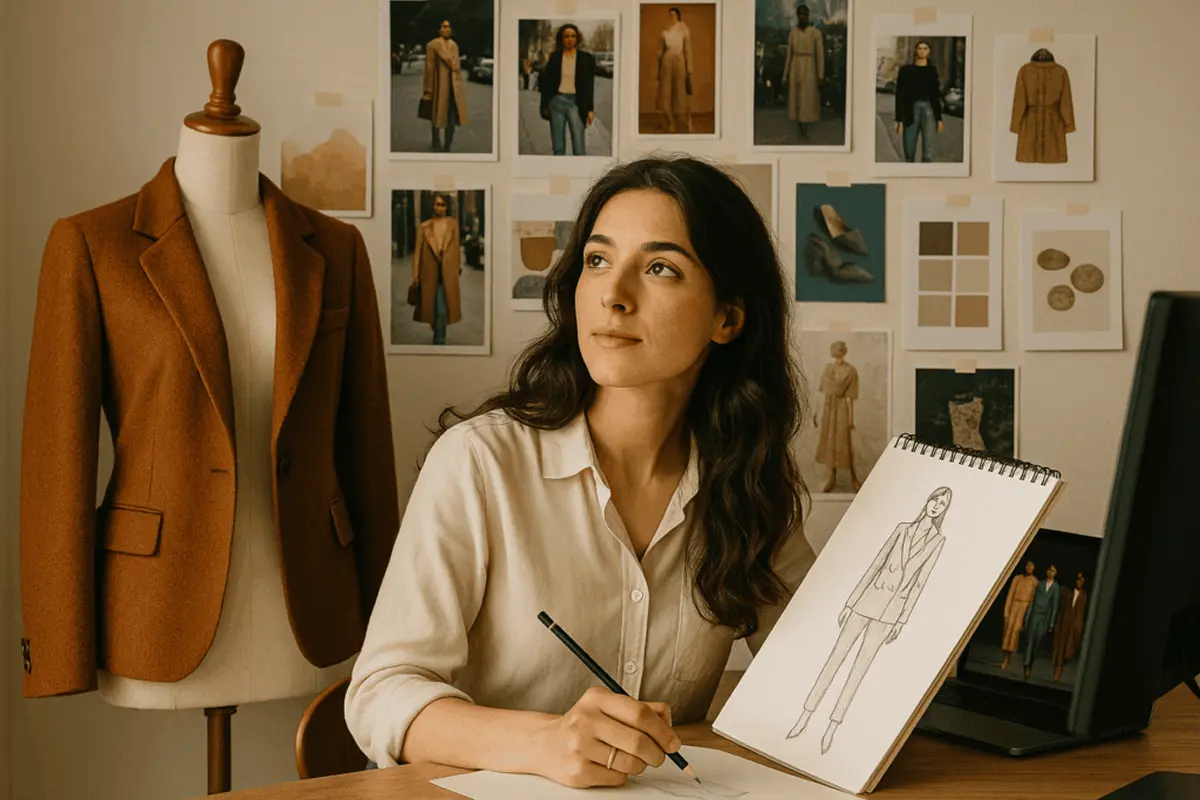
Introduction
Finding inspiration for outfits is the first step in every designer’s creative journey. Fashion evolves quickly, and outfit inspiration plays a defining role in shaping collections that speak to current trends while reflecting timeless style. In today’s digital-first world, designers face endless outfit ideas from social platforms, vintage archives, and real-life street fashion. But inspiration alone is not enough. Brands need systems to create structure, ensure alignment, and bring inspired ideas to life.
Fashion PLM (Product Lifecycle Management) provides that system. It links clothes inspiration, outfit ideas, and trend forecasting into one structured flow. Teams gain speed, organization, and collaboration. With PLM, outfit inspiration turns into actionable product development steps that reduce waste, streamline work, and deliver fashion that connects with consumers.
Why Outfit Inspiration Matters
Outfit inspiration drives creativity. Without it, fashion would lose direction and meaning. People search daily for outfit ideas to guide what to wear on casual days, at night events, or during summer and fall. Designers must take those searches and translate them into fashion that feels both inspired and practical.
Common sources of outfit inspiration include:
- Street style: Everyday outfits spotted on real people walking down the street.
- Fashion media: Blogs, magazines, and industry shows that set the tone for trends.
- Vintage archives: Historical outfits and timeless designs offering unique outfit ideas.
- Digital platforms: Pinterest boards, Instagram posts, and TikTok videos full of styling inspiration.
- Friends, hobbies, and life moments: Real experiences and personal connections that inspire casual or occasion-specific outfits.
These sources fuel creativity, but they also present challenges. Without structure, designers risk drowning in too many ideas, forgetting what was last time considered, or losing track of stuff that once sparked interest. Fashion PLM helps teams capture, categorize, and connect this inspiration to real outcomes.
From Outfit Ideas to Structured Fashion
Outfit ideas often start as unstructured mood boards or folders filled with clothes, images, and accessories. A designer might search for inspiration, draw outfit ideas for different occasions, and create boards full of potential. But too often, the process feels messy and overwhelming. Teams waste time searching for the same ideas, lose alignment, and struggle to accessorize pieces consistently.
Fashion PLM organizes this workflow. By uploading outfit inspiration to a central system, designers ensure every person on the team can access the same data. Outfits become tagged by occasion, season, or color. Forecasts can link directly to these boards, guiding teams toward smarter, more consistent choices. The result is a sense of clarity, alignment, and creative freedom without chaos.
Trend Forecasting and Clothes Inspiration
Trend forecasting is at the heart of modern fashion. Outfit inspiration alone can be limitless, but without data it risks missing consumer interest. PLM integrates with forecasting tools to help designers judge ideas objectively and make sure they continue building collections that work in the market.
With PLM, designers can craft the perfect measurement sheet and:
- Track seasonal palettes for summer and fall
- Define outfit ideas tailored for specific occasions, from casual day wear to black night events
- Spot fabrics, accessories, and silhouettes gaining momentum
- Validate styling inspiration against real consumer searches and shopping data
This integration ensures outfit inspiration is not only inspired but also commercially ready.
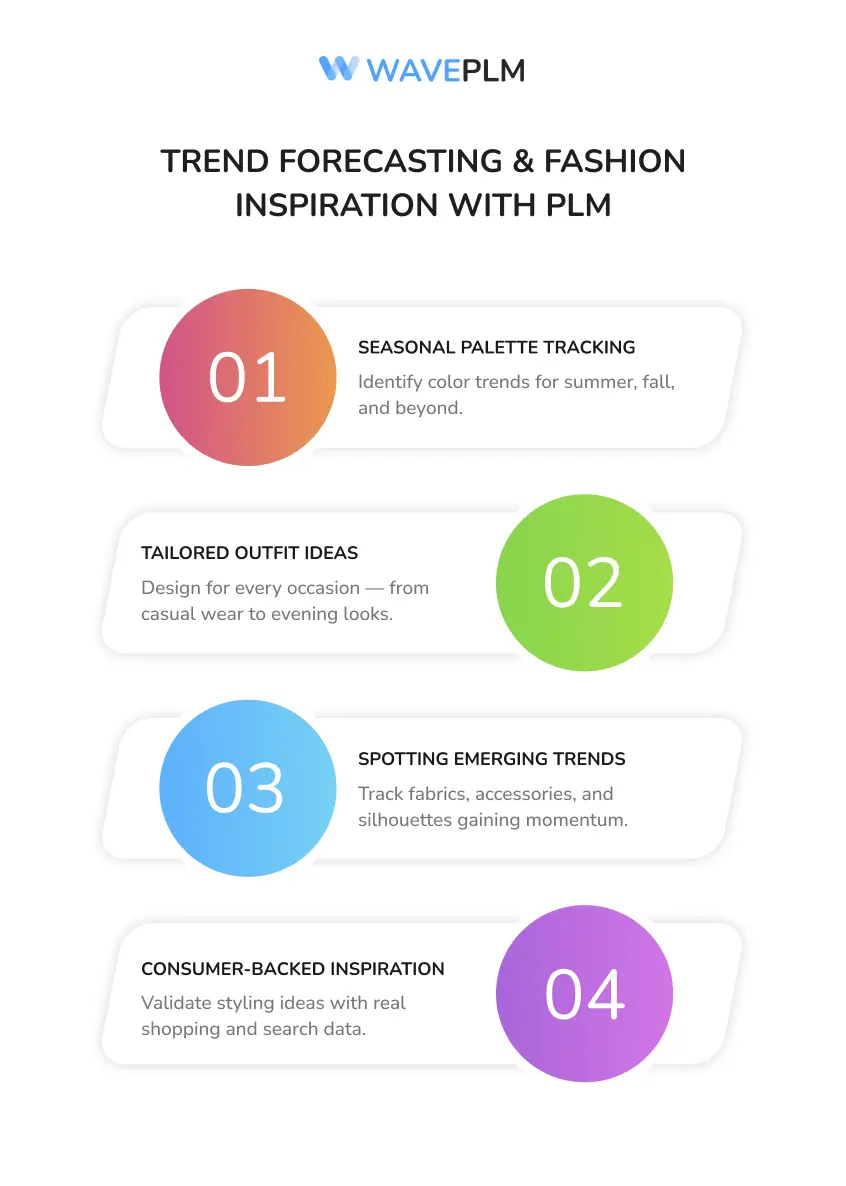
How Fashion PLM Connects Inspiration to Creation
PLM transforms raw outfit inspiration into structured workflows. It bridges the gap between creativity and execution, ensuring that inspired ideas don’t remain unfinished dreams but become wearable, market-ready outfits.
Benefits of PLM for outfit inspiration:
|
Stage |
Challenge Without PLM |
Solution With PLM |
|---|---|---|
|
Collecting outfit ideas |
Scattered files, missing inspiration |
Centralized mood boards with search functions |
|
Sharing inspiration |
Misaligned communication |
Real-time collaboration features |
|
Linking forecasts |
Reliance on guesswork |
Integrated data and AI trend insights |
|
Designing outfits |
Endless revisions, wasted time |
Faster, guided design cycles |
|
Approvals & launch |
Delays and confusion |
Streamlined approvals and structured workflows |
Example Workflow: From Inspiration to Final Outfit
Let’s see how a designer moves through PLM:
- Start with outfit inspiration: Collect casual and night outfit ideas from street fashion, shops, and social platforms.
- Upload into PLM: Store these outfit ideas in mood boards tagged by season, style, and occasion.
- Connect trend forecasts: Link the boards with seasonal reports for summer or fall to validate ideas.
- Create designs: Translate outfit inspiration into sketches, CAD designs, or 3D prototypes.
- Collaborate: Share boards with friends, colleagues, and merchandisers to refine outfits.
- Accessorize & finalize: Add accessories to complete the outfit and align with the chosen vision.
- Approve & launch: Move structured designs into production with clear specifications.
This flow ensures that outfit inspiration develops into finished collections that meet both creative and business needs.
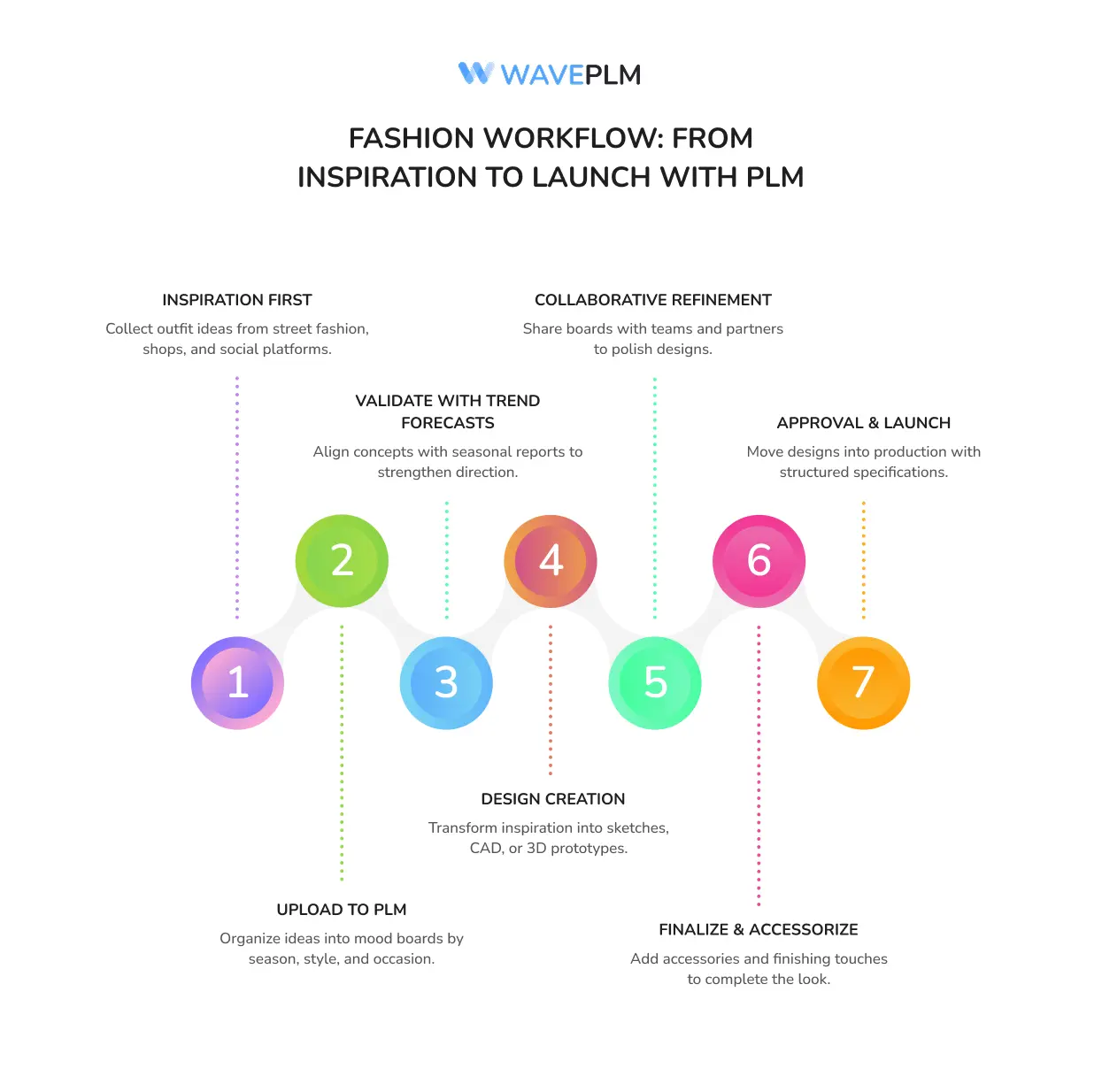
Outfit Ideas by Occasion
|
Occasion |
Outfit Inspiration |
Styling Tips |
|
Casual day |
Streetwear, denim, sneakers |
Keep it simple and accessorize lightly |
|
Night out |
Black dresses, bold tops, tailored pants |
Add jewelry or heels to increase allure |
|
Summer |
Light fabrics, flowy dresses, bright colors |
Draw inspiration from summer trends, accessorize with hats |
|
Fall |
Layered looks, jackets, knitwear |
Use boots, scarves, and warm tones to accessorize |
Organizing outfit ideas this way makes them easier to use in real life and ensures fashion connects with daily occasions.
Practical Tips for Using Outfit Inspiration
- Search broadly: Shops, blogs, and fashion platforms provide endless outfit ideas.
- Define your mood: Decide whether your inspiration reflects casual wear, summer freshness, or fall layering.
- Continue refining: Update inspiration boards so they don’t feel outdated.
- Accessorize thoughtfully: Even a small piece can transform an outfit and define its taste.
- Share inspiration early: Collaborate with teams and friends for feedback.
- Remember the occasion: Keep in mind the lifestyle, body shape, and personality of the person wearing the outfit.
- Draw from real life: Everyday hobbies and interests can spark unique outfit ideas.
- Find balance: Mix creative expression with practical, ready-to-wear outfits.
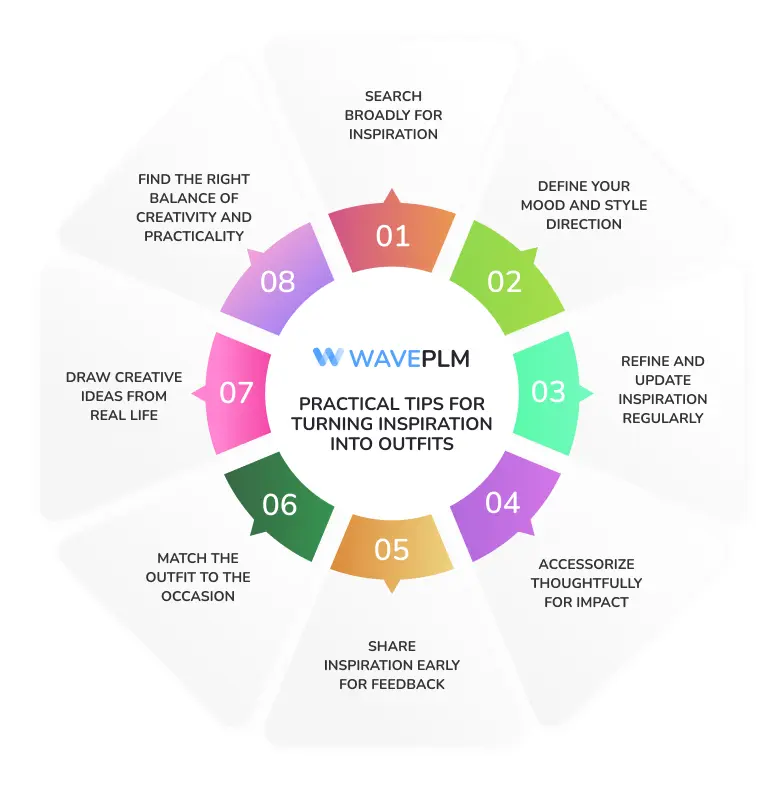
FAQs on Outfit Inspiration
How do I find my fashion inspiration?
Search across social platforms, vintage shops, and street style. Use mood boards to organize outfit ideas.
Is there an AI that puts outfits together?
Yes, several AI-based apps suggest outfit ideas based on your searches, personality, and style preferences.
What is the 7 rule for outfits?
The 7 rule refers to combining seven different style elements—color, fabric, accessories, shoes, layers, hair, and makeup—to complete an outfit.
What inspires your outfit?
Outfits can be inspired by art, music, friends, everyday life moments, or even a song that sparks creativity.
The Future of Outfit Inspiration in Fashion
The way people find outfit inspiration is transforming. Digital platforms now combine trend forecasting with AI-driven suggestions. Soon, PLM systems will integrate even deeper with AI to:
- Automate tagging of outfit inspiration by season, occasion, and style
- Suggest inspired outfit ideas based on consumer interest and searches
- Connect with shops to recommend fabrics and accessories
- Reduce time from outfit inspiration to product launch
- Help brands continue making inspired collections that reflect both creativity and demand
Conclusion
Outfit inspiration is the spark of fashion. It shapes ideas, influences style, and connects everyday life with art. Without structure, inspiration can scatter, lose clarity, and remain unfinished. Fashion PLM centralizes outfit inspiration, trend data, and collaboration to ensure ideas transform into structured, ready-to-wear collections.
From casual outfits worn during the day to black night outfits accessorized with allure, PLM ensures fashion brands live their vision. By drawing inspiration, organizing it, and making it production-ready, PLM helps brands create smarter, faster, and more inspired fashion.
Ready to turn outfit inspiration into structured designs that sell? Visit Wave PLM today and explore how our solutions help brands create fashion that is trend-driven, inspired, and ready for every occasion.



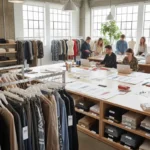

Leave a Reply